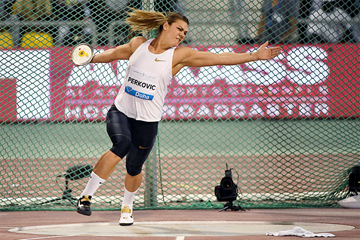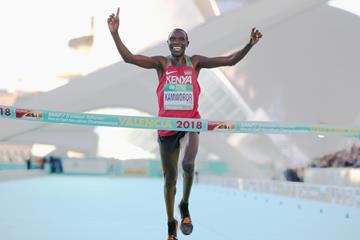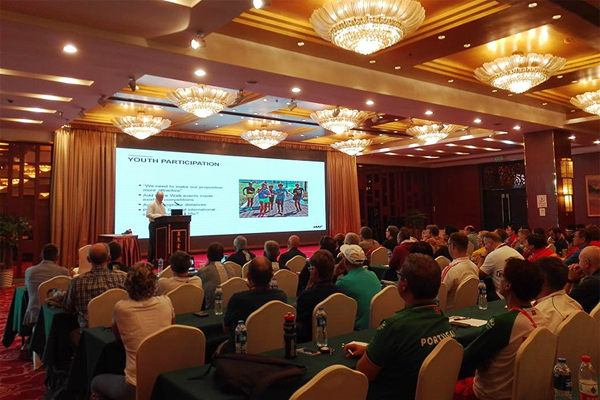With the support of the IAAF, the IAAF Race Walking Committee organised and hosted a seminar on Friday 4 May in advance of the IAAF World Race Walking Team Championships Taicang 2018.
Open to all accredited athletes and officials, the seminar drew an audience of approximately 150 stakeholders from all IAAF areas, representing an estimated 26 countries. This was the first seminar organised by the IAAF Race Walking Committee and follows similar efforts – such as the IAAF Road Running seminar held prior to the World Half Marathon Championships in Valencia – to engage stakeholders and encourage their input into the future direction of IAAF events and programmes.
The main purpose of the seminar was to provide updates on several issues facing the discipline. Moderated by four-time Olympic gold medallist Robert Korzeniowski, the seminar included presentations by Committee Chair Maurizio Damilano, Committee members Dr Tim Berrett and Jane Saville, and Athletics Integrity Unit member Dr Stéphane Bermon.
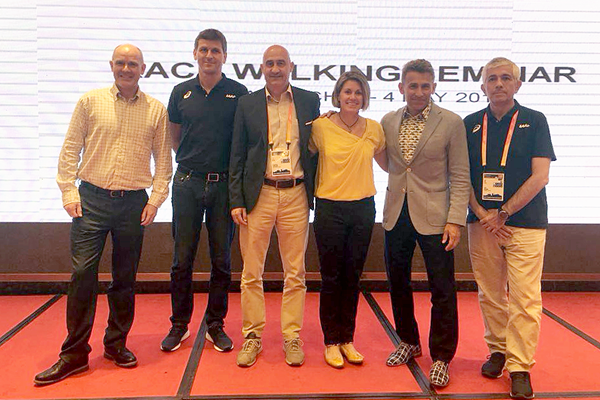
Damilano explained that the Race Walking Committee has been working with the IAAF in its efforts to innovate, modernise, and renew the sport of athletics. He emphasised that race walking has a long history within the athletics family and assured the audience that the members of the race walking committee “are united in our commitment to defend and expand our discipline”.
“Not only must we have our common interest in protecting our discipline at heart, but we must also balance this with the general interest of promoting our sport as a whole,” he said.
Damilano highlighted the discipline’s global diversity and accessibility, but acknowledged that it stands alone within the sport as a discipline that relies heavily on human judgement. He explained that the external pressure to change the discipline’s ‘way of doing business’ can no longer be ignored and that considerable effort has been exerted to address some of the discipline’s challenges.
“We must innovate and modernise if we are to stay relevant in the evolving world of international sport,” he said.
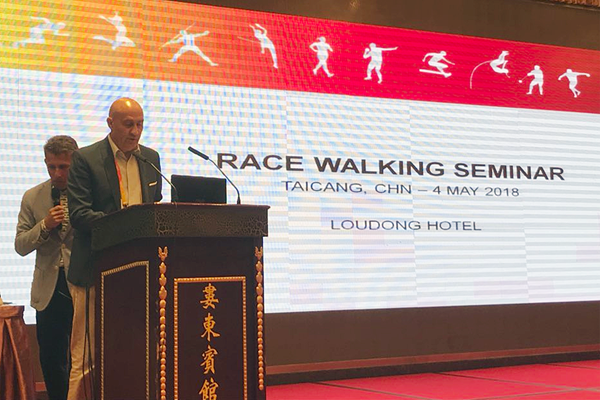
Berrett addressed some of the current competition programme challenges and covered topics ranging from youth participation, embracing technology in presenting events, incorporating fitness walking, the pros and cons of aligning with ‘standard’ running distances such as the marathon and half marathon, the IAAF World Race Walking Team Championships and IAAF Race Walking Challenge, and the future programme of events and distances.
Much of the discussion drew upon the results of an extensive worldwide stakeholder survey that he had developed with the Race Walking Committee’s input and administered in February and March. The survey generated more than 1650 responses from 100 countries and all IAAF areas. Berrett explained that the survey would ensure that input from athletes, coaches, officials, athletics administrators, fans, and media representatives was considered by the Race Walking Committee in its future discussions.
Berrett reiterated Damilano’s call for a critical analysis of the discipline’s presentation. He emphasised that race walking has played an important and integral role in athletics but, for it to be a contributor to the sport’s future, the discipline would need to listen to constructive suggestions from outside its current participant base that would help it progress.
At the same time, he suggested that race walking can be a testing ground within athletics for experimentation with technological advances in presenting sport such as the use of biometric data, on-screen visual displays that enhance the spectator experience, and body cameras.
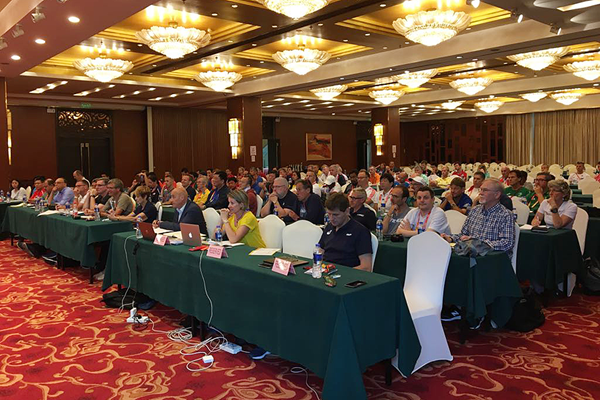
Bermon provided an overview of the Athletics Integrity Unit’s mandate that includes issues ranging from anti-doping to age manipulation, and from gambling to bribery and corruption inter alia. He explained the AIU’s approach to targeted testing of athletes based on a number of factors including an event’s propensity for doping, history, and specific intelligence.
Race walking is viewed as a high-risk discipline because of its physically demanding nature and recent history of adverse analytical findings. Athletes at the seminar were encouraged to hear that 62 race walkers are in the 2018 IAAF Registered Testing Pool and that more than 450 doping tests had been conducted on athletes from the discipline in 2017.
In his brief assessment of other integrity and perceived fairness issues related to race walking, Bermon supported the suggestion that technology that can be used to ensure fairness in judging would go some way to alleviate some of the concerns expressed by detractors of the discipline.
Saville’s presentation focused on the ways in which judging and technology will be critical for shaping the future of the discipline. After highlighting that sport is a business in the 21st century, she noted that the judging of race walking has, in many respects, experienced only limited advances over the past 100 years. She briefly explained how the international judging panel is selected and then shared some statistics regarding the number of athletes who have been disqualified or sent to the penalty lane in recent years.
Saville noted that the last overhaul of rules was conducted in the late 1990s. Since then, minor technological advances have been made to assist with the on-course communication of judging decisions. She noted that many of the survey respondents highlighted that consistency of judging is critical for the future credibility of the discipline.
The increasing use of technology in other judged sports was highlighted, and the explanation of the IAAF-supported development of an electronic insole to detect loss of contact in race walking was explained to the seminar attendees. Many of their initial concerns regarding reliability and flexibility were addressed although it was acknowledged that some of the finer details would need to be worked out prior to introduction of the technology.
Race Walking Committee for the IAAF







 Countdown
Countdown



